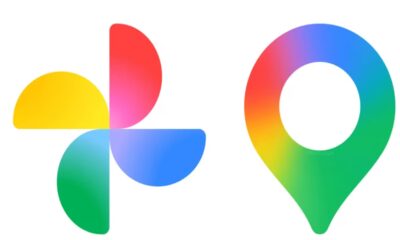Tech
Smart Cards and Digital Signatures: Grady Paul Gaston Examines Advancements in Secure Systems

Smart cards, with their embedded microchips, enable secure data storage and processing, playing a vital role in industries like banking, healthcare, and transportation. Digital signatures, powered by public key cryptography, ensure the authenticity and integrity of digital transactions, replacing manual processes with streamlined, secure alternatives. Together, these innovations form the backbone of modern cybersecurity, offering robust protection in an era where digital trust is paramount.
As these technologies advance, they unlock new possibilities, from biometric integration and blockchain authentication to quantum-resistant encryption, ensuring their relevance in the face of security challenges. However, Grady Paul Gaston stresses that the implementation of these tools also comes with challenges, such as managing regulatory compliance and educating users. By proactively addressing these hurdles, smart cards and digital signatures are set to remain integral in securing sensitive data and building trust.
Core Technologies and Applications
Smart cards operate using embedded microchips that store and process data securely. These chips are designed to perform tasks such as encryption and authentication, making them essential in areas like payment systems, access control, and personal identification. Contactless smart cards, widely used in public transportation and tap-to-pay systems, demonstrate their convenience and efficiency in daily life.
Digital signatures leverage public key cryptography to authenticate users and ensure the integrity of transmitted data. This technology plays a vital role in securing online transactions, signing legal documents digitally, and verifying software downloads. By eliminating the need for physical paperwork and manual verification, digital signatures streamline processes while maintaining high levels of security.
Integration for Enhanced Security
The combination of smart cards and digital signatures significantly elevates the security of modern systems. Smart cards act as secure storage devices for cryptographic keys, which are crucial for generating and validating digital signatures. This integration ensures that sensitive credentials remain protected even in the event of a network breach. Applications like national ID systems and secure corporate access highlight the effectiveness of this synergy.
Industries such as healthcare and finance have embraced this integration to safeguard sensitive data and streamline operations. A healthcare professional, for example, might use a smart card with a digital signature to access patient records securely while maintaining compliance with stringent privacy regulations. By blending the strengths of these technologies, organizations can build robust systems that are resilient to threats and adaptable to the evolving demands of cybersecurity.
Innovations Driving Progress
Smart card technology continues to evolve, with advancements such as contactless functionality and biometric integration opening new possibilities. Contactless cards have become popular in transit systems and retail, offering speed and convenience without compromising security. Meanwhile, biometric-enabled smart cards, which incorporate fingerprint or facial recognition, are further enhancing authentication processes, particularly in high-security environments.
Digital signatures are also transforming, with blockchain-based authentication emerging as a groundbreaking innovation. This decentralized approach ensures greater transparency and tamper-proof validation, reducing risks associated with centralized systems. Additionally, artificial intelligence is being integrated into digital signature systems to detect fraud patterns and enable real-time verification.
Challenges and Key Considerations
Despite their numerous benefits, smart cards and digital signatures are not without challenges. Smart cards, while secure, can be susceptible to physical tampering or theft, requiring robust mechanisms to prevent unauthorized access. Similarly, digital signatures depend on the secure storage and management of private keys, which, if compromised, could lead to significant breaches. Addressing these vulnerabilities is critical to ensuring their effectiveness.
Regulatory compliance plays a pivotal role in the adoption of these technologies. Businesses and governments must navigate complex frameworks, such as GDPR and eIDAS, to ensure their solutions meet legal standards.
Equally important is educating users on how to leverage these tools responsibly. Misuse or lack of awareness can undermine even the most advanced systems. A well-informed user base is often necessary for maximizing the benefits of these technologies while minimizing potential risks.
The Future of Secure Systems
The future of smart cards and digital signatures is poised to be shaped by groundbreaking advancements, including quantum-resistant encryption. As quantum computing progresses, traditional encryption methods may become vulnerable, making the development of quantum-safe algorithms a top priority. These innovations will ensure that smart cards and digital signatures remain viable in a post-quantum era.
Another exciting trend is the move toward cloud-based solutions, which allow for more scalable and flexible applications. Cloud-based digital signature platforms are making it easier for businesses to integrate secure signing processes across global operations. Similarly, smart cards are being adapted for use in remote authentication scenarios, supporting hybrid work environments and decentralized access systems.
As the cybersecurity landscape evolves, these technologies are expected to play an even more integral role in protecting critical infrastructure and personal data. Their adaptability and continuous improvement position them as indispensable tools in a world where digital trust is more important than ever.
Disclaimer: This is a sponsored piece of content. Time Bulletin journalists or editorial staff were not involved in the production or writing of this content.
-

 Real Estate4 weeks ago
Real Estate4 weeks ago10 Best Real Estate AI Tools in 2025
-

 Cryptocurrency4 weeks ago
Cryptocurrency4 weeks agoHow to Install and Use MetaTrader 5 for Smarter Trading
-

 Business3 weeks ago
Business3 weeks agoFrom Monastery to Main Street: How a Former Monk Is Revolutionizing Executive Coaching for Tiny Businesses
-

 Book3 weeks ago
Book3 weeks agoA Journey Across Centuries: “The Compass of Truth – Whispers of Dara Shikoh” Explores Memory, Identity and Spiritual Awakening
-

 Lifestyle2 weeks ago
Lifestyle2 weeks agoBob Gerace Discusses Coaching Themes: Confession, Reconciliation, Communication, Intimacy, and Fatherhood
-

 Real Estate4 weeks ago
Real Estate4 weeks agoRichard Koenigsberg: Preserving the Past Through Historic Restorations
-

 Sports3 weeks ago
Sports3 weeks agoNBA Season 2025-26: Full Schedule, Preview, Key Dates, Players, Teams and How to Watch Live
-

 News3 weeks ago
News3 weeks agoSana Raees Khan Honoured with “Influential Leader – Pride of Maharashtra” Award
























